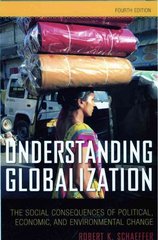Econ 1V Problem Set 3 (Due 18:00 PST on 4/23) Submission Options: (a) Write your answers and draw your graphs in this document, convert it to a PDF file, and upload the converted document to Canvas under assignments. (b) Print this document, handwrite your answers, scan the document as a PDF, and upload it to Canvas under assignments. Please include all text and figures in a SINGLE file. Do not upload multiple files. Late homework will not be accepted. You are welcome to discuss problem-solving strategies with your classmates who are currently enrolled in Econ 1V, but you must write up your own answers. Identical or near identical answers are not acceptable. For full credit, please show all of your work and label all figures/graphs. 1. [Deviations from CompetitionMonopoly and Market Power] The following gives the average total cost and price schedule for a monopolist. Average Quantity of Price Total Marginal Marginal Total Cost Output Revenue Revenue Cost 1 11 18 2 10 11 3 9 7.67 4 8 7 5 7 6.6 6 6 7 7 5 8 a. Please fill out the rest of the chart when fixed costs equal $10. b. At what quantity will the monopolist produce in order to maximize profits? What will be the price at this level of output? What will be the profits? c. What quantity maximizes total revenue? Why is this not the profit-maximizing quantity? d. Sketch the demand curve, the marginal revenue curve, the marginal cost curve, and the average total cost curve. Label the price the monopolist charges and the quantity the monopolist produces. Label the areas on the graph corresponding to the consumer surplus, producer surplus, and deadweight loss. Note: for simplicity, you can draw the curves as continuous lines. You do NOT need to draw the curves as step functions. 2. [Deviations from CompetitionBetween Monopoly and Competition] Suppose the government places a sales tax on firms in a monopolistically competitive industry that is in a long-run equilibrium. a. Draw a diagram showing the marginal cost, average total cost, marginal revenue, and demand curves before the sales tax. Label the equilibrium price and quantity. b. On the same diagram, show the marginal cost, average total cost, marginal revenue, and demand curves after the sales tax is in place. Label the new price and quantity. c. What happens to the number of firms in the industry? d. What happens to the demand curve in the long run? 3. [Deviations from CompetitionBetween Monopoly and Competition] Compare the long-run equilibrium of a competitive firm with that of a monopolistically competitive firm with the same cost structure. a. Draw diagrams showing the marginal cost, average total cost, marginal revenue and demand curves for the two types of firms in the long run. Label the price charged by the two types of firms and the quantity they each produce. b. What are the firms' profits? How is the long-run price different in the two models? Which type of firm operates at a minimum average total cost? 4. [Deviations from CompetitionBetween Monopoly and Competition] Suppose there are only two producers of cupcakes in Palo Alto: Sprinkles and Kara's Cupcakes. Both firms have the same constant marginal cost of $10 and no fixed cost. The [inverse] demand curve is given by = 51 2. Suppose that each of these producers can only produce two quantities (cupcakes) each day: 6 or 7. Further assume that producers chooses their quantities simultaneously without knowing which quantity the other is choosing. a. Suppose Sprinkles chooses to make 6, and Kara's Cupcakes chooses 7. Find the total market quantity and the resulting market price. Find the resulting profits for Sprinkles and Kara's Cupcakes. b. Now fill in the profit matrix given below. [Hint: repeat part (a) with different quantity choices. For example, your answers to (a)-ii fills in the top right quadrant] Sprinkles \\ Kara's 6 7 6 (S(6,6), K(6,6)) (S(6,7),K(6,7)) 7 (S(7,6),K(7,6)) (S(7,7),K(7,7)) (Notation: S(x,y) and K(x,y) denote Sprinkles' and Kara's Cupcakes' profits when Sprinkles chooses to produce x cupcakes and Kara's Cupcakes chooses to produce y cupcakes) c. Find the equilibrium quantities produced by Sprinkles and Kara's Cupcakes. There can be more than one equilibrium. d. Suppose Sprinkles and Kara's Cupcakes collude, i.e. maximize their combined profits. Compute how much this cupcake \"cartel\" would produce, the price charged and the total profits that will be earned. 5. [Deviations from CompetitionAntitrust Policy and Regulation] The following table shows the market shares of firms in three different industries. Number of firms Share distribution Industry 1 100 Each firm with 1 percent Industry 2 15 10 firms with 5 percent 5 firms with 10 percent Industry 3 3 1 firm with 60 percent 2 firms with 20 percent a. Complete the above table by calculating the Herfindahl-Hirschman index. b. Would the FTC try to prevent a merger between the largest and second largest firms in industry 2? In industry 3? Why? 6. [Deviations from CompetitionAntitrust Policy and Regulation] The demand schedule and total costs for a natural monopoly are given in the following table. Price Quantity Total Costs 19 10 126 18 11 135 17 12 144 16 13 153 15 14 162 14 15 171 13 16 180 12 17 189 11 18 198 10 19 207 9 20 216 8 21 225 7 22 234 a. Why is this firm a natural monopoly? What will the monopoly price be? Calculate profits at this price. b. Suppose the government sees that this is a natural monopoly and decides to regulate it. If the regulators use average total cost pricing, what will the price and quantity be? [Hint: for average total cost pricing, what are the firm's profits equal to?] c. If the regulators use marginal cost pricing, what will the price and quantity be? What are profits in this situation? Why is this policy difficult for regulators to pursue in practice? d. Why might the government want to use incentive regulation







